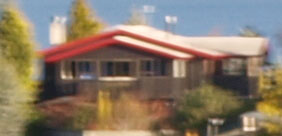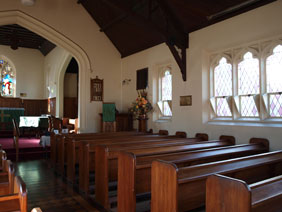Olympus E-520
-
-
Written by Gordon Laing
Olympus E-520 lenses
The Olympus E-520 employs a Four Thirds lens mount and is compatible with the complete range of Four Thirds lenses which includes models from Olympus, Sigma and Panasonic / Leica. All these lenses are designed from the ground-up for DSLR use and many offer superb quality.
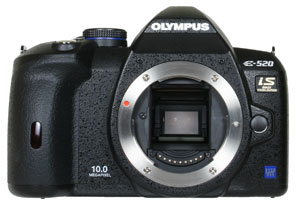 |
Like other Four Thirds DSLRs, the E-520’s sensor size effectively reduces the lens field of view by two times, so the 14-42mm kit zoom delivers an equivalent of 28-84mm, while the 25mm pancake lens becomes a standard 50mm. The coverage with the 14-42mm can be seen below.
Olympus E-520 coverage with Zuiko Digital 14-42mm kit zoom | ||
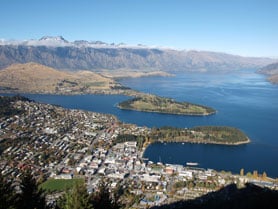 | 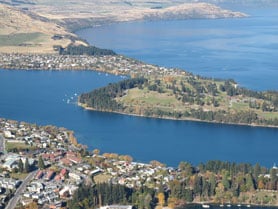 | |
14-42mm at 14mm, f8 (28mm equivalent) |
14-42mm at 42mm, f8 (84mm equivalent) | |
Depending on your region, the E-520 will typically be available body alone, or in one of three kits with either the 14-42mm by itself, the 14-42mm plus the 40-150mm, or the 14-42mm with the longer 70-300mm.
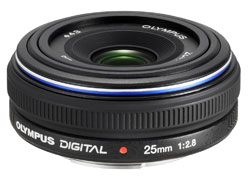 |
While most E-520’s will be sold in one of the above kits, an interesting alternative – or additional – lens for this body will be the Zuiko Digital 25mm pancake. First introduced with the E-420, the 25mm pancake is a very slim and light lens measuring just 23.5mm thick and weighing 95g. This makes it much smaller and lighter than the already compact 14-42mm kit lens, while also boasting a brighter f2.8 aperture.
Mount it on the E-520 and the overall package becomes much more portable and better able to squeeze into pockets or bags. The combination may not be as tiny as when mounted on the E-420, but it’s still a compelling option for E-520 buyers – along with existing owners of E-5xx and E-4xx bodies. To find out more about this lens, see our Olympus Zuiko Digital 25mm pancake review.
Olympus E-520 image stabilisation
The earlier Olympus E-510 was the very first Four Thirds body to feature built-in Image Stabilisation. This was later followed by the flagship E-3, and now of course the new E-520 also offers the facility. Like those earlier cameras, the E-520’s Image Stabilisation employs a Supersonic Wave Drive (SWD) motor to adjust the sensor’s position in the x and y axes, thereby allowing it to stabilise any lens you attach. Like the E-3, you can also use the IS system with non-Four Thirds lenses by manually entering their focal length; a choice of 36 focal lengths are available from 8 to 1000mm. But the E-520 offers an additional capability over the other models.
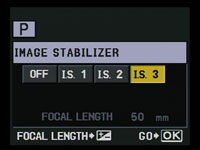 |
Pressing the dedicated IS button on the rear now presents the choice of three modes to its predecessor’s two: IS 1 applies compensation in both axes, IS 2 only compensates in the y axis for when you’re panning horizontally, and the new IS 3 mode only compensates in the x axes for horizontal panning when the camera’s turned on its side. There may not be many times you’d use this third mode and it could also be argued orientation sensors may have been able to make the switch between IS 2 and IS 3 automatically, but it’s still a considerate touch to offer it here. Olympus claims up to 4 stops of compensation are possible.
Stabilisation isn’t actually applied until you take the photo, but for a preview of its effect during Live View, simply press and hold the IS button. You’ll hear the IS system whir quietly and see the image stabilise – this is particularly apparent when using the manual focus-assist. You can take a photo during while previewing the stabilisation, but note the camera switches off the IS preview after a few seconds. If you have IS enabled when you power the camera down you’ll also feel (and hear) the camera shudder for a moment as the system resets itself. We have a full demonstration of the IS system working in practice in our Olympus E-520 video tour.
To put the E-520’s IS system to the test here we photographed a scene with the 14-42mm kit lens zoomed-into 42mm. Working at an effective focal length of 84mm, conventional photographic advice would recommend a shutter speed of around 1/90 to avoid camera shake. Of course different people, not to mention different conditions result in different amounts of shake, but we found with the IS switched off, we couldn’t consistently handhold this particular shot below 1/80 without shake creeping into most of the shots.
|
Olympus E-520 with Zuiko Digital 14-42mm Image Stabilisation Mode 1 off / on | ||
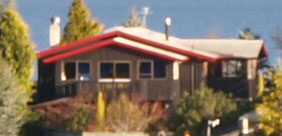 | ||
100% crop, 14-42mm at 42mm, 1/10, 100 ISO, IS 1 off |
100% crop, 14-42mm at 42mm, 1/10, 100 ISO, IS 1 on | |
Activating IS 1 allowed us to take the same shot and consistently keep it sharp at 1/10, which corresponds to three stops of compensation over the non-stabilised shot with equivalent sharpness. In other situations we measured two stops of compensation, but never as many as four. While we may not have personally achieved four stops of compensation with the E-520 in our tests, having two to three built-into a body which will work with any lens is clearly a highly valuable feature and one of the key selling points over non-stabilised rivals.
Olympus E-520 focusing
Like its predecessor, the E-520 employs a fairly basic 3-point auto-focus system when using the optical viewfinder. This makes it considerably less sophisticated than the 9-point AF systems of rivals like the Canon EOS 450D / XSi and Sony Alpha A200 / A300 / A350. That said, like the 3-point system of the Nikon D40(x) and D60, the E-520’s auto-focus is fine for general use and we rarely experienced a time when it didn’t snap onto the desired subject.
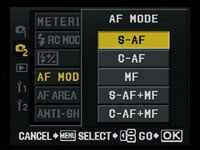 |
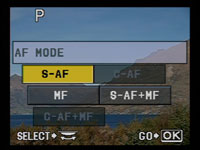 |
The new Imager AF contrast-based option in Live View allows the E-520 to enjoy an extended 11-point system, which along with face detection can certainly help lock onto subjects beyond the area covered by the conventional three-point system. But since the Imager AF mode is fairly slow at focusing and continuous AF is unavailable in Live View, the increased number of focus points isn’t really going to help in an action situation. The bottom line is if you’re shooting a moving subject which could go anywhere in the frame, there are better cameras to use.
Most Four Thirds lenses including the kit zooms and 25mm pancake (but excluding the 12-60mm), employ motor-assisted manual focusing which can feel a little odd if you’re used to traditional mechanical systems. It also has quirks like not being adjustable unless the camera’s switched on, not to mention resetting itself to infinity when the power’s switched off (this last option can be disabled if you prefer though). It does however allow the E-520 to sport one of the more unusual features on a DSLR: the ability to reverse the direction of the focusing ring.
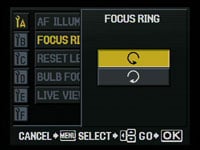 |
If manual focusing’s very important to you, we’d advise trying out a Four Thirds body first before buying as you may not get on with the implementation. That said, it’s perfectly possible to manually focus easily and fairly accurately with the E-520’s optical viewfinder, while the magnified option in Live View allows you to get it absolutely spot-on.
For more details on the E-520’s auto-focusing options in Live View, see the Live View section in our Design page.
Olympus E-520 metering and exposures
The Olympus E-520 offers five metering modes: 49-zone Digital ESP, Center-weighted, and the choice of three spot-metering options. Along with normal spot-metering, the additional Hi Spot and SH (Shadow) Spot modes are designed for scenes dominated by large areas of light and dark respectively; these modes then deliberately over and under-expose respectively to compensate.
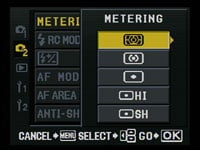 |
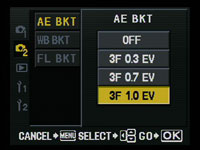 |
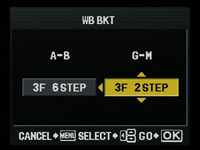 |
The E-520 offers shutter speeds from 1/4000 to 60 seconds plus a Bulb option that’s adjustable up to 30 minutes. Exposure compensation is also available in a wide range of +/-5EV, although beyond +/-3EV, it’s expressed numerically.
Exposure bracketing is available but fairly basic with three frames up to 1EV apart – so while it’s fine for getting the right exposure, it’s not sufficiently flexible for automated HDR work. The E-520 also offers White Balance and flash power bracketing.
Olympus E-520 anti dust
In a DSLR market where anti-dust facilities are becoming the norm, it’s important to remember Olympus was the first to truly address the problem. So the E-520 becomes the latest Olympus DSLR to employ the SuperSonic Wave Filter (SSWF). This vibrates a filter in front of the sensor in an attempt to shake-free any foreign particles and has proven more effective than rivals.
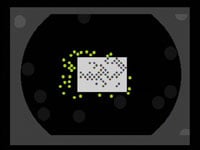 |
 |
Dust reduction takes place every time the camera powers-up and when entering and exiting Live View or activating the pixel mapping function – the process is indicated by a brief flicker of the SSWF light to the side of the mode dial. The screengrabs shown to the left only appear if there’s no card present in the camera.
Following our usual DSLR torture-test we left the E-520 face-up without a lens, inside and outside for ten minutes each; we can’t know how much dust entered the body during this time, nor even how much was present to start with, but we know such a process would result in dust being a problem for most models.
We then activated the SSWF by powering the camera on and off twice, before taking a series of photos at every aperture setting of a plain white surface at close range with the Zuiko Digital 14-42mm zoomed-in and manually focused to infinity. Dust marks normally become most apparent at the smallest apertures (eg f16 and f22), but it’s also important to test at more common apertures.
Olympus E-520 dust example at f22 / f22 with levels | ||
 |  | |
100% crop, 14-42mm at 42mm, f22 |
100% crop, 14-42mm at 42mm, f22, with levels | |
At f22 the image appeared to be clean, but upon much closer examination, we spotted three very faint marks towards one corner – the worst is cropped and pictured above left at 100% and you can see it really is barely visible. To make it clearer we’ve applied an extreme Levels adjustment in Photoshop and pictured the result above right. Feel free to download this image onto your own computer to apply the Levels and see for yourself that it really is the same area. At f16, these marks became more diffuse and so faint they were essentially invisible.
While the same tests with the E-420 yielded no visible marks, this is still a good result for the E-520. Most DSLRs suffer from considerably more noticeable dust marks, so to have such faint marks even at f22 is impressive. Once again, this result may be as much to do with the distance between the filter and sensor as it is with the effectiveness of the filter itself, but either way, dust marks were barely noticeable on our E-520, which is something you can’t say for many DSLRs.
Olympus E-520 sensor and processing
The Olympus E-520 is equipped with a 10.1 Megapixel Live MOS sensor which conforms to the Four Thirds standard and therefore measures 17.3x13mm. It generates 4:3 aspect ratio images which are narrower than the traditional 3:2 aspect ratio of other DSLRs. The size and resolution may be the same as its predecessor, but Olympus describes the E-520’s sensor as a new chip which boasts improved dynamic range that’s closer to that of the E-3. The recent E-420 also shares the same sensor.
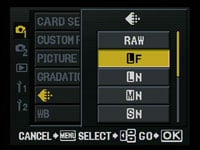 |
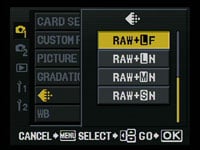 |
The maximum resolution remains 3648×2736 pixels and there’s the choice of no fewer than six lower resolutions. Like the E-510, there’s a variety of JPEG compression options, but it’s out with the old descriptions like HQ, and in with Basic, Normal and Fine. You can also adjust the quality setting used by each description, including opting for a Super Fine mode with very mild compression
RAW files can be recorded with 12-bits of data either by themselves or accompanied by a JPEG – you can also choose whether the JPEG is Large Fine, Large Normal, Medium Normal or Small Normal. There’s also a custom option which lets you choose whether both the RAW and JPEG files are deleted when you OK the erase button, or just one of them.
Large Fine JPEGs typically measure 4 to 5MB each, while RAW files weigh in between 9 and 11MB each. To see resolution and detail results from the E-520 compared to Canon EOS 450D / XSi and Pentax K200D, check out our results pages.
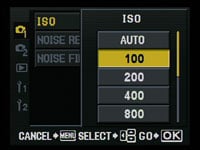 |
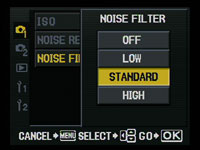 |
Sensitivity runs between 100 and 1600 ISO in 1EV increments; there’s also an Auto setting and you can set the maximum ISO for the camera to use. The E-520 offers noise reduction on long exposures and like the E-420 and E-3, there’s also four different noise filter settings, Off, Low, Standard and High – we have examples at all the settings in our results pages, where we found reducing the noise filter from the default could deliver preferable results across the sensitivity range.
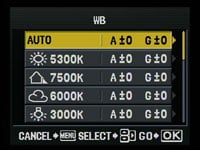 | |
Alongside Auto White Balance and eight presets, there’s a custom mode and the option to dial in an exact colour temperature. You can also fine-tune the white balance in the amber / blue or green / magenta directions, or apply adjustments as part of a three-frame white balance bracketing option. White balance adjustments can also be previewed in Live View.
Contrast, sharpness and saturation are applied using a choice of Picture Modes: Vivid, Natural, Muted, Portrait, Monotone and a Custom option. In the colour Picture Modes, contrast, sharpness and saturation can all be adjusted on a scale of -2 to +2; the Custom mode adds a Gradation option. In the Monotone mode you can apply colour effects including a sepia tone, or simulate the use of colour filters including yellow, orange, red and green.
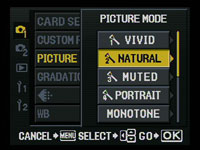 |
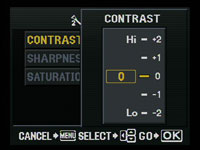 |
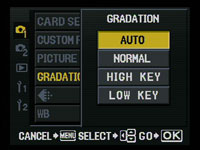 |
We used the default Natural setting which is more refrained than the Vivid mode and better-suited to subsequent enhancement in software. If you intend to use JPEGs straight from the camera though, the Vivid mode delivers punchier output without going over the top.
Also following the E-3 and E-420, the E-520 additionally offers a choice of Graduation options: along with the default Normal there’s High Key and Low Key settings which extend tonal graduations for subjects which are mostly highlighted or in shadow respectively. The Auto Gradation option activates the E-520’s new Shadow Adjustment Technology, or SAT for short.
SAT divides the image into regions and adjusts the brightness in each which Olympus describes as being effective for compositions with very bright or dark areas. Note: if you’ve set the Function key to enable Face Detection, then the Gradation will also set to Auto (handy for backlit portraits), but if you directly enable Face Detection using the screen controls, it won’t.
To put SAT to the test we took identical photos with and without it in a dark interior with bright light streaming through the windows. This composition normally suffers from clipped shadow and highlight areas.
|
Olympus E-520 Shadow Adjustment Technology (SAT) off / on | ||
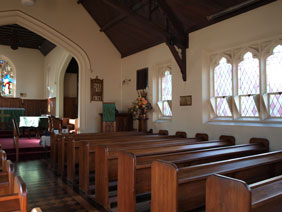 | ||
Olympus E-520, SAT Off, 100 ISO, 1/6, f3.5 |
Olympus E-520, SAT On, 100 ISO, 1/8, f2.8 | |
 |  | |
Olympus E-520, SAT Off, Histogram |
Olympus E-520, SAT On, Histogram | |
The shot without SAT, along with its histogram is shown on the left, while the shot using SAT and its histogram are on the right. The E-520 has used a slightly quicker exposure with SAT to better-protect highlight areas, while artificially boosting shadow areas. The result on the right has certainly boosted the brightness of the dark shadowy areas in the roofing, and although you can’t see it very clearly on the reduced samples above, the stained glass windows are less saturated – although sadly still blown.
The penalty is unsurprisingly greater noise in those shadow areas and even at 100 ISO, the roofing area on the shot with SAT looks grainy at 100%. The histograms confirm the highlights are still clipping on both samples, and reveal the adjustment of tones at other levels.
Olympus E-520 drive modes
The Olympus E-520 offers one continuous shooting mode which is rated slightly faster than its predecessor: 3.5fps versus 3fps on the E-510. Olympus quotes unlimited JPEGs while memory remains or up to eight RAW files. We fitted a Lexar Professional UDMA 300x 4GB card and put the specifications to the test. Note the E-520 doesn’t officially exploit the UDMA transfer aspect like the E-3, but we used it none-the-less as it remains a very quick card.
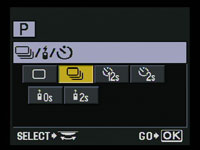 |
Set to Continuous, we shot 42 Large Fine JPEGs in 12.4 seconds before the camera slowed slightly; this corresponds to a rate of 3.4fps, and it should be noted the camera could keep on firing beyond this point, but not always at this consistently fast rate. The buffer also cleared almost instantly.
Set to RAW mode, the E-520 captured nine shots in 2.6 seconds before slowing to about 1.5fps. This initial nine shot burst again corresponds to a rate of 3.4fps, and the buffer emptied four seconds after we repeated the test and let go at the nine-frame mark.
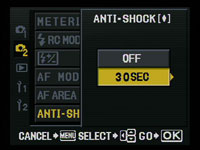 |
So in practice while our E-520 didn’t quite deliver the quoted 3.5fps of the spec sheets, it came very close and it’s a welcome boost over the 3fps of its predecessor. It ranks the E-520 at a similar level to the Canon 450D / XSi, with both models coming-in comfortably faster than the 2.35fps reality of the Sony A350.
In terms of other drive modes, there’s the choice of a two or 12 second self-timer, and two options for use with the optional RM-1 infra-red remote control, one which fires as you press the button and the other which fires after a two second delay. Impressively you can also adjust the delay of a mirror-lockup between one to 30 seconds.
Finally it is possible to remote control the camera using the Olympus Master software, but unlike Canon’s latest DSLRs, this is an optional purchase. Also unlike the Canon 450D / XSi and 40D, you won’t be seeing a live view on your computer monitor with this software.
